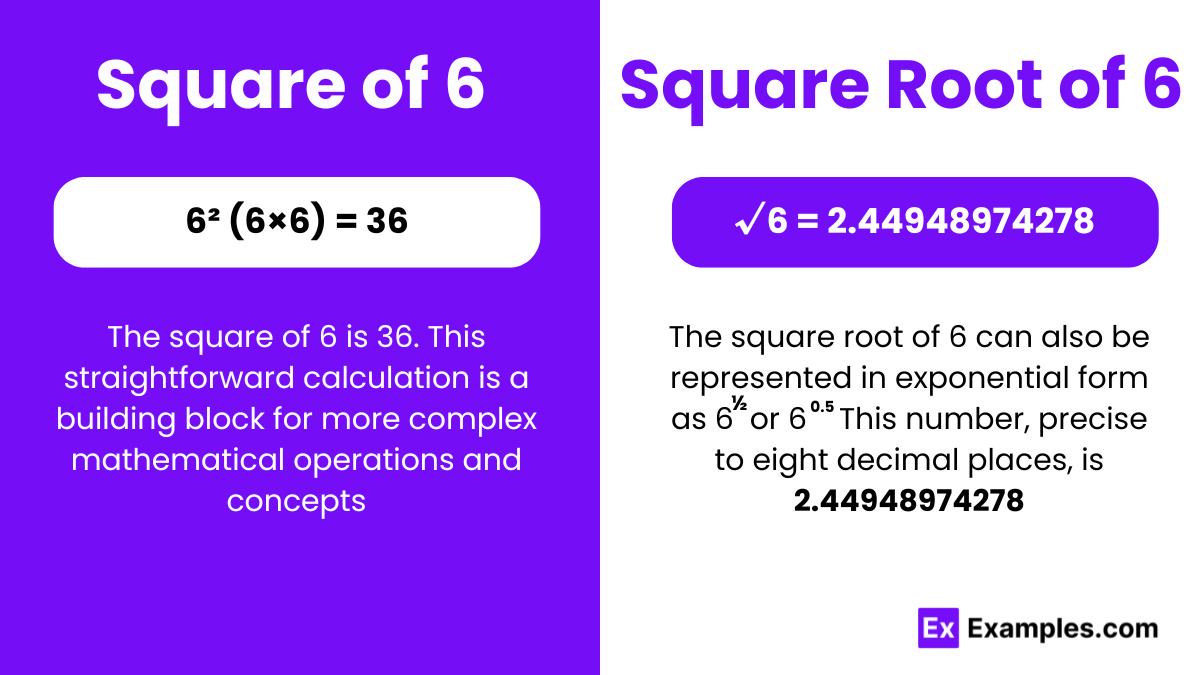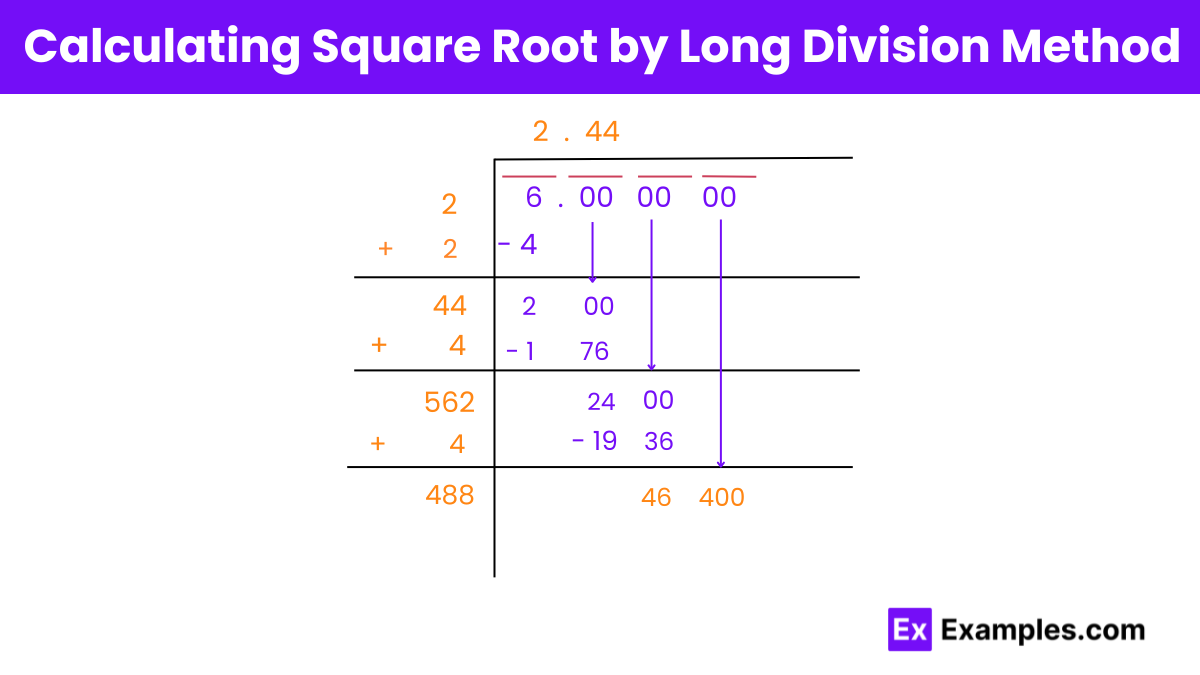What is the square of 6?
32
36
40
42

6² (6×6) = 36
To calculate the square of 6, you simply multiply 6 by itself:
The square of 6 is the result of multiplying 6 by itself. In mathematical terms, it is written as 6², which equals 36. So, the square of 6 is 36. It represents the area of a square with sides of length 6 units.
The square root of 6, denoted as √6, refers to the positive number that,, meaning it cannot be expressed as a simple fraction and its decimal representation goes on indefinitely without repeating. The approximate value of the square root of 6 is approximately 2.44948974278. In other words, if you multiply this number by itself, you get approximately 6.
The square root of 6 finds applications in various fields such as mathematics, physics, engineering, and finance. It’s particularly useful in geometry for calculating side lengths or areas of shapes where the value of √6 is involved.
Exponential Form: 6^½ or 6^0.5
Radical Form: √6
The square root of 6 is an irrational number.
The square root of 6 (√6) cannot be expressed as a fraction of two whole numbers (such as 2/3, 5/7, etc.). It’s a number that goes on forever without repeating any pattern when written as a decimal.
So, in simpler terms, the square root of 6 is irrational. It doesn’t fit into the category of rational numbers, which can be expressed as fractions. Instead, it’s a bit more complex and doesn’t follow a simple pattern in its decimal representation.
Finding the Methods to determine the value of the square root of 6 involve various mathematical approaches or techniques aimed at approximating or calculating its numerical value. These methods may include iterative algorithms, the use of calculators, mathematical tables, or numerical estimation techniques.
The estimation method for finding the value of the square root of 6 involves approximating its numerical value using techniques such as rounding, comparison with known square roots, or using mathematical properties to get close approximations.
2. Calculate and Take a number between 2 and 3, say 2.5, and square it: 2.5 * 2.5 = 6.25.
3. Since 6.25 is higher than 6, you need to try a smaller number. You can repeat this process with smaller increments or use methods like Newton’s method for faster convergence.
4. Refine to Continue adjusting your guess until you get close to the actual value. You can use a calculator or software to get a more accurate result.
5. Check Once you have a refined estimate, you can check by squaring it again to see if it’s close to 6.

Step 1: Initial Guess
Step 2: Square the Guess
Step 3: Subtract and Remainder
Step 4: Bring Down the Next Pair
Bring down the next pair of digits (00) to continue the calculation.
Step 5: Double and Trial Division
Step 6: Square the New Guess
Step 7: Adjustment and Final Approximation
The square root of 6 is used in various fields such as mathematics, physics, engineering, and finance. It is particularly useful in geometry for calculating side lengths or areas of shapes involving √6.
The square root of 6 can be approximated using methods like long division, Newton’s method, or through the use of calculators and software.
No, the square root of 6 is an irrational number and cannot be simplified into a simpler form involving whole numbers or fractions.
Yes, √6 can be relevant in real-world scenarios such as calculating distances, dimensions, or quantities in various fields including architecture, construction, and surveying.
Text prompt
Add Tone
10 Examples of Public speaking
20 Examples of Gas lighting
What is the square of 6?
32
36
40
42
Which number is closest to the square root of 6?
2.4
2.5
2.6
2.7
If x² = 6, what is x?
2.4
2.5
2.6
2.7
What is √6 rounded to the nearest whole number?
2
3
4
5
Calculate 6².
30
32
34
36
Find √6 to two decimal places.
2.43
2.45
2.47
2.49
If you multiply √6 by itself, what result do you get?
6
12
18
24
Which of the following numbers is not close to the square root of 6?
2.4
2.5
2.6
2.8
What is the approximate value of √6 when expressed as a fraction?
2.45/1
2.5/1
2.4/1
2.4/1.1
Determine the value of (√6)².
5
6
7
8
Before you leave, take our quick quiz to enhance your learning!

